posted by Dave Arnold

Here is a post on no-tech food—the quest for wild sea urchins.
I’ve spent the last couple of days on a remote island in Maine’s Penobscot Bay. Bear Island is 40 some-odd acres of rocky bluffs, beaches, freshwater marshes, meadows, and spruce forest. With the exception of a couple of photovoltaic cells that power some lights and battery chargers, the island runs much as it did when the Fuller family purchased it in 1904. No running water, privies, and careful control of waste and garbage are the rules of the game. The island remains in their possession today, and only family members and lucky guests ever get to go. My family has been going for most of the last 8 years.
Anyone who knows me knows I don’t hang around outside sunning myself on the beach. I’m so pale I make Casper look tan and I burn lobster-red almost instantly under the sun; but I love being outside at Bear because I can forage for food—really good food. Foraging for food is my favorite thing to do outside. The thrill of looking for and finding wild things to eat is something everyone should experience. It can be a lot of work, sometimes for meagre returns, but feeling like you are getting something for nothing is sweetness itself.
Euell Gibbons, the great granddaddy of food foragers, wrote a guidebook to foraging on the Penobscot Bay islands in the 60’s (If you don’t know Euell Gibbons, his books are worth a look—he is one of my favorites). The island isn’t only beautiful, it has its own food-foraging guide book! On land, my two favorite forage items are wild sea rocket and what I think is sea-blight. Sea-blight is green, crunchy, salty, juicy, and wonderful. You pick it right by the high tide line. The water actually covers it at high tide. Sea rocket looks similar to regular rocket, but is paler, with thicker, juicier, leaves and an even more pungent horseradish and mustard taste. It grows right on the beach.
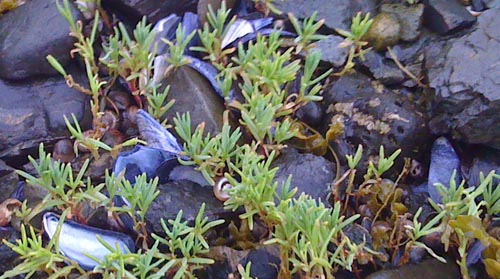
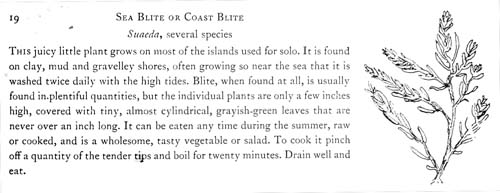
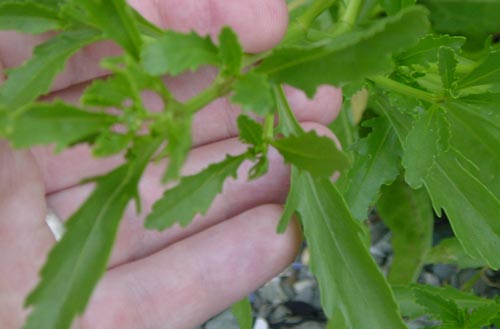
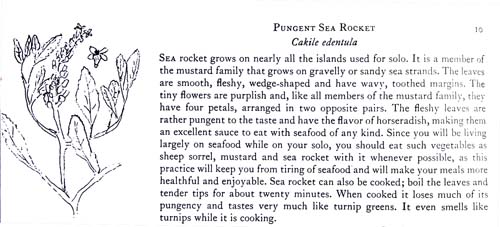
There are plenty of other good things—wild strawberries, beach peas, orach (lamb’s quarters), etc on land and plenty of good stuff in the water—like huge shoals of great wild mussels; but what I always look forward to is the island’s supply of sea urchins.
Isamu Noguchi, the famous artist, was a visitor to the island long ago and found to his delight that it was teaming with sea urchins—uni as they say in Japanese. No one on the island had ever known they could be eaten until Isamu showed them how. Urchins are best found on rocky ledges just below the low tide line. Wear gloves when you get them because they are prickly.
Before I started going to Bear eight years ago, a Japanese company discovered the supply of urchins in the bay and set up an operation that essentially vacuumed the bay clean and shipped the uni out to Japan. As a result, my urchin hauls on the island had always been modest. Not this year. When my friend Jonathan Marvel (the person who invites us to the island) and I pulled up to a promising urchin spot we saw this:
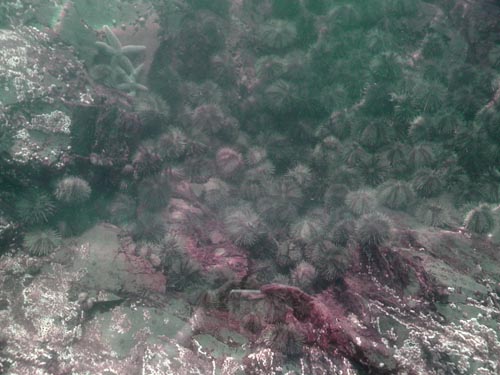

The rocks were wallpapered with urchins! It was unbelievable. I’ve never seen anything like it.
For all you Pacific coast urchin snobs let me tell you this. Uni from Maine isn’t as big at the Pacific, but it is the sweetest I have ever had. Now I’ve never had Pacific coast urchin right from the water, but I’d take Maine urchin right from the water over any of the Pacific stuff that gets shipped to New York any day.
To clean urchins and convert them into the uni you are familiar with, flip the urchin upside-down and cut off the bottom with a pair of kitchen shears. The bottom is flat and has the sea urchin’s mouth. That whole flat part should be cut off. Don’t cut the curved part or you could damage the uni. The flat part comes away and you can see the crazy-looking uni mouth-parts (sorry there is no picture—I didn’t have my camera while we were cleaning them). What’s left in the urchin is a bunch of blackish purple goopy stuff. Shake out the goop. What you are left with is the urchin roe attached to the shell. That is the part that is delicious. So sweet it’s like candy from the sea.
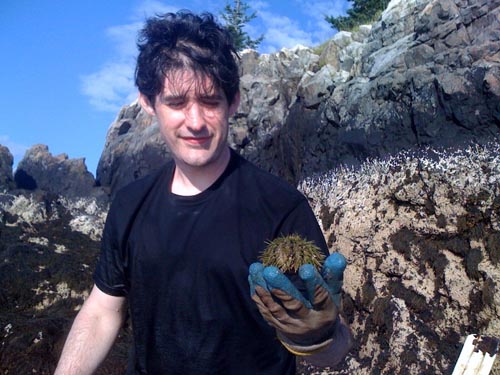
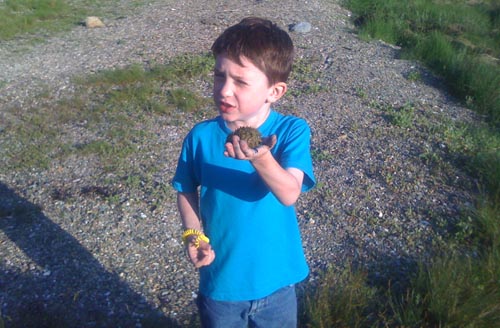

Did you know:
Uni’s “mouth parts,” also called Aristotle’s Lantern, is the second most complex biomechanical structure in existence.
Number 1? The human hand.
Just for fun.
Dave, I already love the blog, but I can’t tell you how excited I was to read this post in particular. I moved from Brooklyn back to Maine (my home state) last October. Over the winter I started collecting foraging books, including Euell’s. You are right on point, looking for and finding wild things to eat really is a thrill. Thanks for putting Maine and foraging in Cooking Issues.. keep up the great work
Thanks for the kind words Ben.
I’m a painter and I’m lucky enough to visit Bear Island in late June (I stay at Birch Lodge). Next year I’ll be on the lookout for the wild greens you mentioned…
jealous. did the kids eat the uni, too?
20(or so) years ago… Halibut Point, Rockport, Massachusetts (when it was just a quarry)… sitting on the edge of the Atlantic… crystalline day, seeing clear to Kennebunkport… watching the tide go out… tidal pools teeming with starfish and sea urchin… breaking them open with sharp stones… scooping out the gonads with pierced, bleeding fingers… first taste of uni, like nectar from the sea… unforgettable.
Thanks for the memory Dave.
When I dove for sea urchins years ago, we would call that kind of collection a “honey hole”. I see by your picture that it’s clear, as we predicted, that urchins from deeper waters have crawled up to feed at the surf-zone.
Hi Johnny D.
I like that term –honey hole. I still can’t believe it. The both of us just burst out laughing when we found it. We had to be careful not to step on them (we didn’t want to damage any we weren’t going to eat). There were several other spots like it in the area, but another spot less than a quarter mile away that we had used in previous years was at normal levels. Go figure. Do you really think they are coming from deeper water?
Dave
Hi Dave,
I do believe they are coming from deeper water. When we collected urchins, the color of the roe set the market price. Bright, orange color fetch the highest price. We discovered early that the best color were harvested from shallow waters. Urchins collected below 50 feet had less desirable color because there was less quality-feed available. More kelp grew at the surf- zone where better light promoted growth. We always thought that once the shallow areas were clear of urchins, their brethren in deeper waters could crawl up and take their place. Seems that is exactly what’s happened. The fact they took several years to do it is no surprise – they don’t exactly run away from you.
JohnnyD
Wow. I love the information. Thanks.